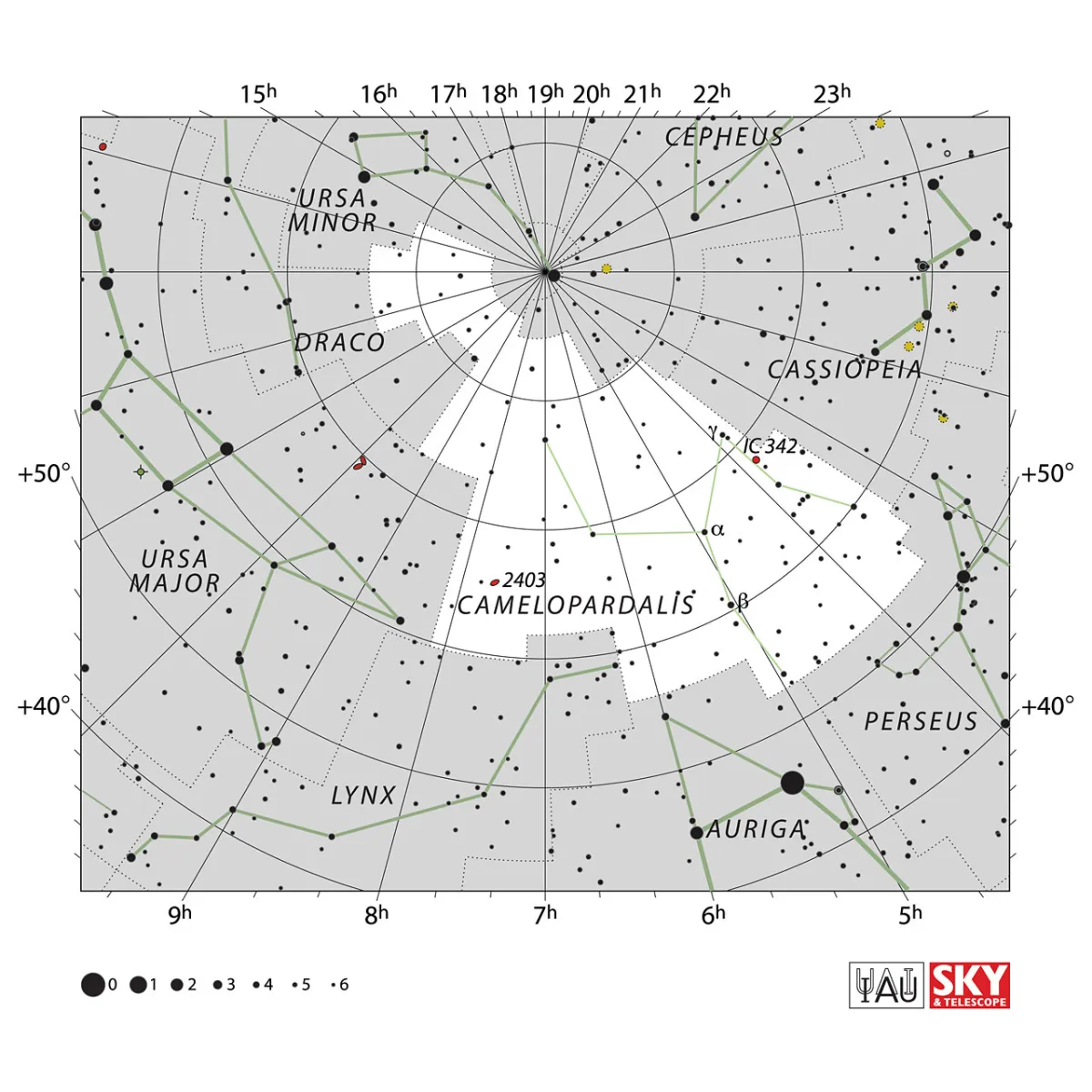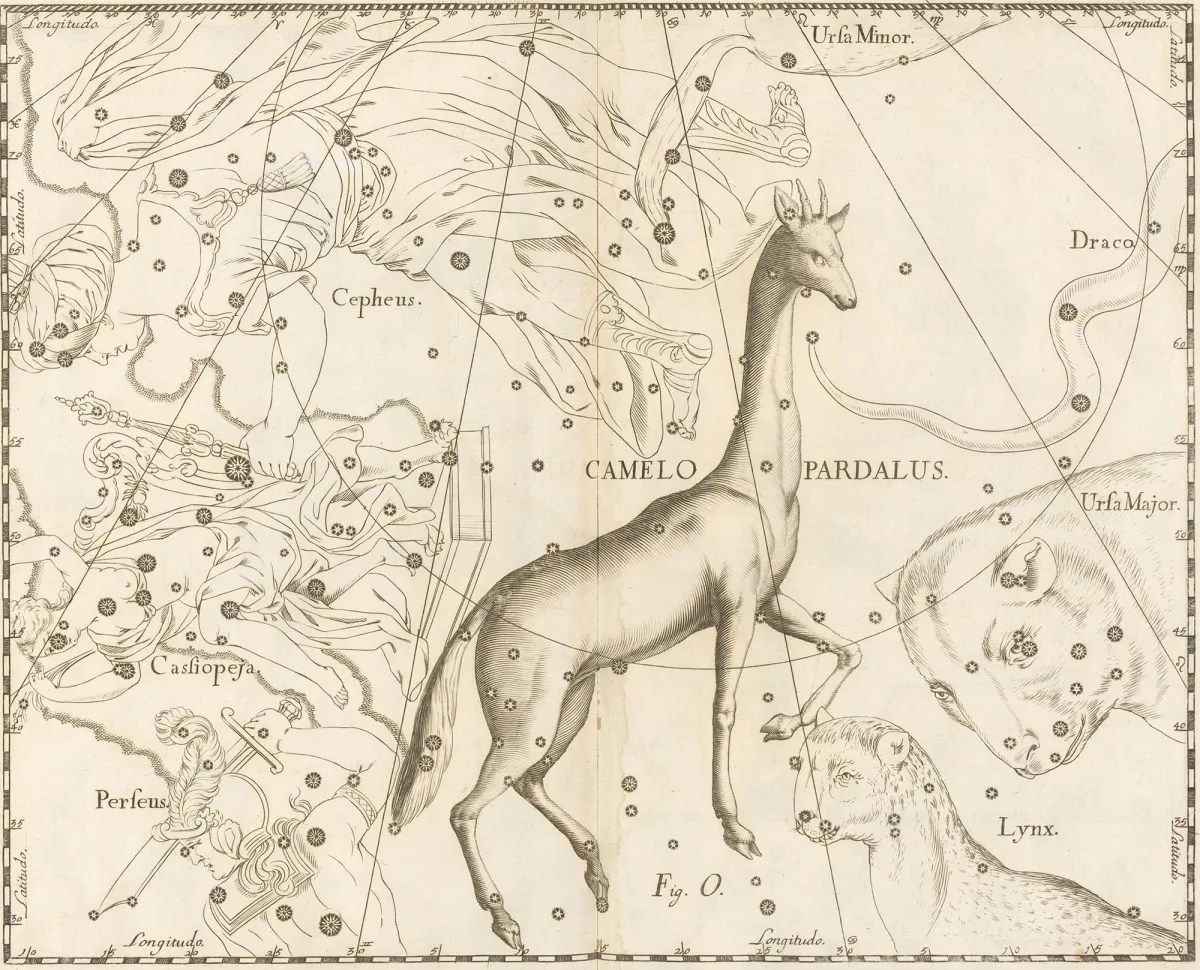Constellation Camelopardalis (Giraffe)

Properties
Between the constellation Auriga and the Pole Star there is a gap of yawning emptiness in the firmament. Only a few stars achieve a brightness that would captivate our eyes and lead to an association. Just two stars are easily visible to the naked eye. The area of the constellation is 757 square degrees and the centre culminates around midnight on December 23rd. [9, 15]
| IAU Name | Camelopardalis |
| IAU Genitive | Camelopardalis |
| IAU Abbr. | Cam |
| English Name | Giraffe |
| Culmination at local midnight | 22 December |
| Season (Latitude +0.0°) | September … May |
| Right Ascension (J2000.0) | 03h 15m 36s … 14h 27m 08s |
| Declination (J2000.0) | +52° 39' 56" … +86° 05' 51" |
| Area | 757 deg2 |
| Neighbours (N↻) | UMi, Cep, Cas, Per, Aur, Lyn, UMa, Dra |
Deep-Sky Object Descriptions
Catalogues

History
The giraffe was only introduced to constellation studies at the beginning of the 17th century and therefore has no mythological background. The constellation is mostly attributed to the Dutch astronomer Petrus Plancius, but the mathematician Jakob Bartsch, a son-in-law of Johannes Kepler, mentioned it in a book as early as 1624. In his work Usus astronomicus planisphaerium Argentinae, this mathematician, bare of any poetic imagination, baptized this amorphous spot in the sky with the name "Giraffe". The giraffe was known in ancient Greece as the "leopard camel". Jakob Bartsch preferred to call the constellation a camel, namely the camel that Rebekah brought from Haran to Canaan to marry Isaac. (Genesis 24:61). Other constellations named by Bartsch are Columba and Monoceros. Since astronomers are reluctant to change the names of the constellations that have become naturalized, Camelopardalis (also Camelopardus) has been preserved to this day. [7, 21, 133]